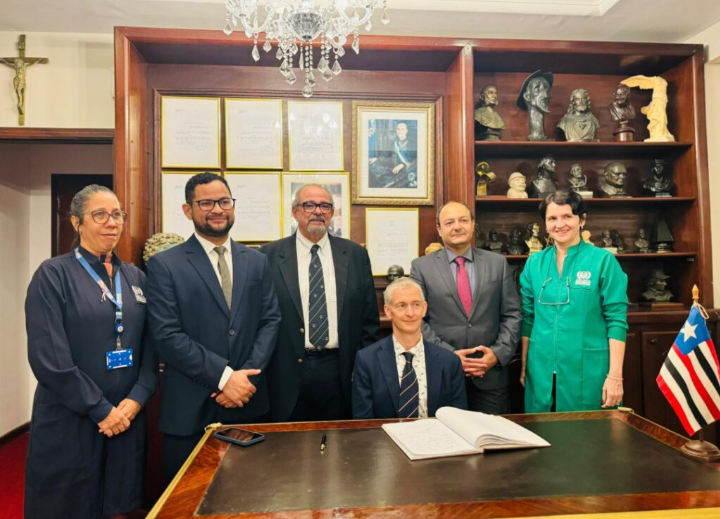
One of the most important reflections during UK House 2022, a world reference event when it comes to education and technology, which took place in London between 29 and 31 March, were the methods and the need for assessments. With so many changes in schools since the beginning of the pandemic, does it make sense to continue the assessment as before? There are those who believe that traditional assessments do more harm than actually enhance learning.
Porphyr needs your donation to an exhibit that celebrates the achievements of teachers. sharing!
Eduardo Briceño, member of the Aspen Institute Global Leadership Network, spoke in a lecture on the differences between the performance environment and the development environment. In the beginning, the important thing is to show what you know well, highlight your strengths, and avoid showing any mistakes. To get to this point, it takes practice and a lot of repetition. “Who, as a student, has never tried to hide what he did not know?”
In the second type of environment, each person always tries to challenge himself to learn new things, and therefore is ready to make mistakes. “The goal here is to improve. In practice, this means trying to do things you don’t know very well; the focus is on the unknown,” he explained.
With teachers and school administrators his main audience, Eduardo wondered if it was clear to students what school represented a development environment. The public educators said no and told the reasons. Of course, the amount of assessments requiring a correct answer came up as “bastards,” being one of the main reasons students see the school as an area to demonstrate good performance, rather than a space for exploration and learning.
In practice, using an online system that runs tests that show results immediately, the speaker provided an example of how teachers can assess what students think and understand about a topic, without the need for formal exams. The idea is to use students’ answers to be able to follow the class along a specific path, not to give grades.
Responses to online forms are designed in a variety of formats: such as statistics, word clouds, or lists, but usually without specifying who provided each answer. The classroom experience becomes interactive and stress-free to prove that you know the correct answer.
However, Eduardo cautions that it is not enough to abandon formal assessments to change the mindset of students. Educators need to create an environment that welcomes making mistakes, demonstrate the practical importance of what is seen in class, and also set an example for continuous learning. “We have to put ourselves in a development zone — and show the students how we are trying to improve ourselves,” he said. Check out some of the highlights in the video below.
continuous learning
It is possible to conduct constant micro-assessments in the classroom, as suggested by Eduardo Briceno during Bett UK, even when no equipment and internet are available. Arthur Galampa, a Brazilian who works in teacher training at King’s College, received a delegation of Brazilian teachers and said it was very common for English teachers to hand out small whiteboards to students. Thus, they can ask questions and read the answers several times during the class, to see how far the class has followed a topic, and where the doubts are.
“I have found that using whiteboards to assess children’s learning is educationally transformative. It is easy, cheap and fits into any kind of room layout and really changes the way you interact,” said Arthur, who had about a decade of teaching experience in Brazil before moving to the UK. .
Read also:
Deep learning happens when we slow down and search.
Making learning visible gives meaning to what the teacher teaches
Diagnostic assessment allows you to look at the student in an integrated way
As much as schools and educators would like to rethink forms of assessment, in order to promote improvement rather than demonstrate good performance, is the community ready for schools to stop giving scores or concepts to students? The school is not alone in the world and needs to speak to the expectations of everyone, from the students themselves to the government.
In this context, families play a major role. “One of the things preventing us from changing the way we rate students in schools is parents. Families want to know where their children are and their grades. They feel that without these grades they will not be able to keep up with their children’s education,” said Amy Barr, director of assessment at Ark School in the UK. “But there is a lot of other rich information we can give parents, far better than degree or concept. We have to talk to parents to change the way we stay.”
However, the concept change should also include other areas, such as employers, so that in a selection they do not repeat standardized assessments or cover their curriculum with “good grades”. “It is important to involve employers in this discussion. I am a teacher and a business owner as well. In my team, people learn together every day, but they don’t take exams or remember things that were said months ago. They work collaboratively, and they have to choose and apply useful information. This is The skills I need as an employer,” concluded Matt Wingfield, CEO of the Association for Electronic Evaluation, UK.
* The journalist traveled to London at the invitation of Brazil house.

“Friendly zombie guru. Avid pop culture scholar. Freelance travel geek. Wannabe troublemaker. Coffee specialist.”






